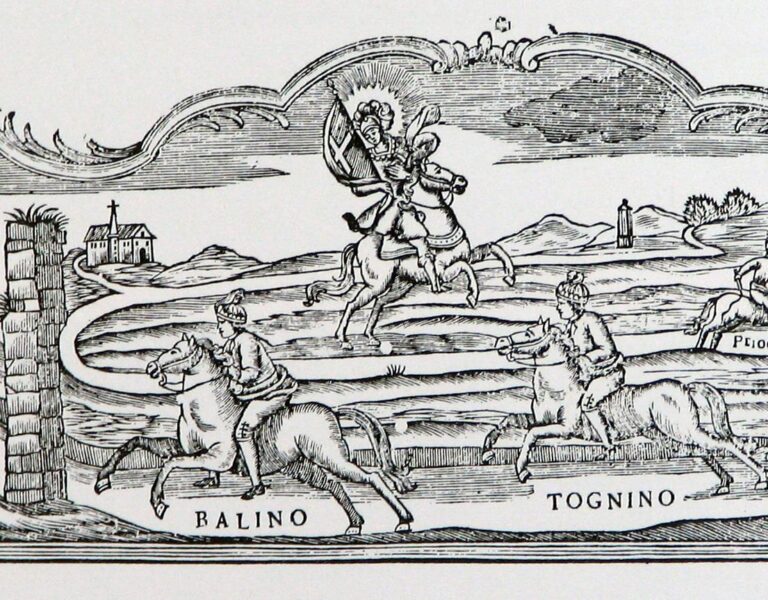The Palio di Asti, one of Italy’s oldest and most vibrant cultural festivals, continues to captivate visitors from around the world, driving significant tourism to the Piedmont region each year. Rooted in medieval tradition, this historic horse race not only showcases the rich heritage of Asti but also serves as a dynamic platform for promoting local culture, cuisine, and craftsmanship. As the festival gains increasing international attention, it plays a pivotal role in boosting Italy’s travel industry, drawing history enthusiasts and culture seekers alike to experience an authentic celebration that intertwines past and present.
The Historic Roots and Symbolism Behind the Palio di Asti Festival
Dating back to the 13th century, the festival is steeped in medieval heritage, originating as a celebration of Asti’s victory over rival cities and a display of civic pride. It evolved from a simple horse race into a grand spectacle that reflects the city’s turbulent history and its citizens’ enduring spirit. The Palio is not merely a race; it embodies the complex social and political fabric of the time, where different districts, or “contrade,” come together in a fierce but friendly rivalry, each proudly representing its unique identity through vibrant colors and emblems. These districts engage in traditional pageantry and rituals that honor their shared history, fostering a palpable sense of community and continuity today.
Key Symbolisms Embedded in the Festival Include:
- The Banner (Palio): Crafted annually, this silk banner symbolizes honor and victory, a coveted prize reflecting decades of competition and local pride.
- The Joust: Not just a race but a ritualistic contest reflecting medieval chivalry, where skill and strategy blend with tradition.
- Costumes: Elaborate medieval attire worn by participants recalls the city’s historic eras, blending artistry with storytelling.
- The Horses: Revered as noble warriors, horses stand at the heart of the celebration, their speed and stamina celebrated alongside the riders’ agility.
| Element | Symbolic Meaning | Modern-Day Significance |
|---|---|---|
| The Banner (Palio) | Victory and Honor | Emblem of local pride and achievement |
| The Joust | Medieval Chivalry | Celebration of skill, tradition, and rivalry |
| District Costumes | Historical Identity | Preservation of cultural heritage |
| Horses | Nobility and Strength | Central to competition and spectacle |
How Palio di Asti Boosts Local Economy and Promotes Regional Tourism
The Palio di Asti serves as a significant economic catalyst for the region, attracting thousands of visitors each year whose spending spikes demand in local businesses. Hotels, restaurants, and artisanal shops experience a surge in revenue, benefitting from the influx of tourists eager to witness this historic horse race and immerse themselves in Piedmont’s rich cultural heritage. Additionally, the festival generates seasonal employment opportunities, ranging from event staffing to hospitality roles, sustaining livelihoods and stimulating economic circulation within Asti and its surrounding areas.
Key contributors to the economic uplift include:
- Increased occupancy rates in local accommodations during the festival period
- Boost in sales for traditional food and wine producers
- Growth of artisanal craft commerce linked to festival souvenirs
- Expanded marketing reach through media coverage of the event
| Economic Impact Factor | Estimated Annual Revenue (€) |
|---|---|
| Tourism Accommodation | 1.2 million |
| Local Food & Wine Sales | 850,000 |
| Souvenir & Artisan Products | 430,000 |
Beyond the immediate financial gains, the Palio di Asti helps fortify the town’s profile as a vibrant cultural destination, effectively promoting regional tourism. It showcases Asti’s unique traditions and historic architecture, enticing visitors to extend their stay and explore neighboring vineyards, medieval castles, and culinary routes. This festival-driven spotlight fosters stronger visitor loyalty and encourages repeat tourism, making the region a sustainable hotspot for Italian cultural travelers.
Insider Tips for Visitors Attending the Palio di Asti Experience
To fully immerse yourself in the vibrant atmosphere of this historic event, consider securing your spot early, especially within the piazza where the race unfolds. Viewing balconies and terraces provide exclusive vantage points and often require advance booking. Don’t miss out on local food stalls offering traditional Piedmontese delicacies – indulging in authentic bites such as bagna cauda or agnolotti enriches your cultural experience beyond the thrilling horse race.
For those eager to blend tradition with convenience, here are some essential pointers:
- Dress in layers: The event stretches through the afternoon into the evening, and temperatures can vary.
- Arrive early: To avoid congestion and soak in the pre-race pageantry, including parades and flag-throwing performances.
- Use public transportation: Parking is limited, so shuttle buses and trains from nearby cities ease your commute.
- Learn basic Italian phrases: The locals appreciate effort and it enhances your engagement with vendors and residents.
In Retrospect
As the Palio di Asti continues to captivate visitors with its vibrant pageantry and deep-rooted traditions, it remains a vital force in promoting cultural tourism in Italy. This historic festival not only showcases the rich heritage of the Piedmont region but also drives economic growth by attracting travelers from around the world. With each annual race, the Palio di Asti reaffirms its role as a beacon of Italian cultural identity and a significant highlight on the country’s tourism calendar.



